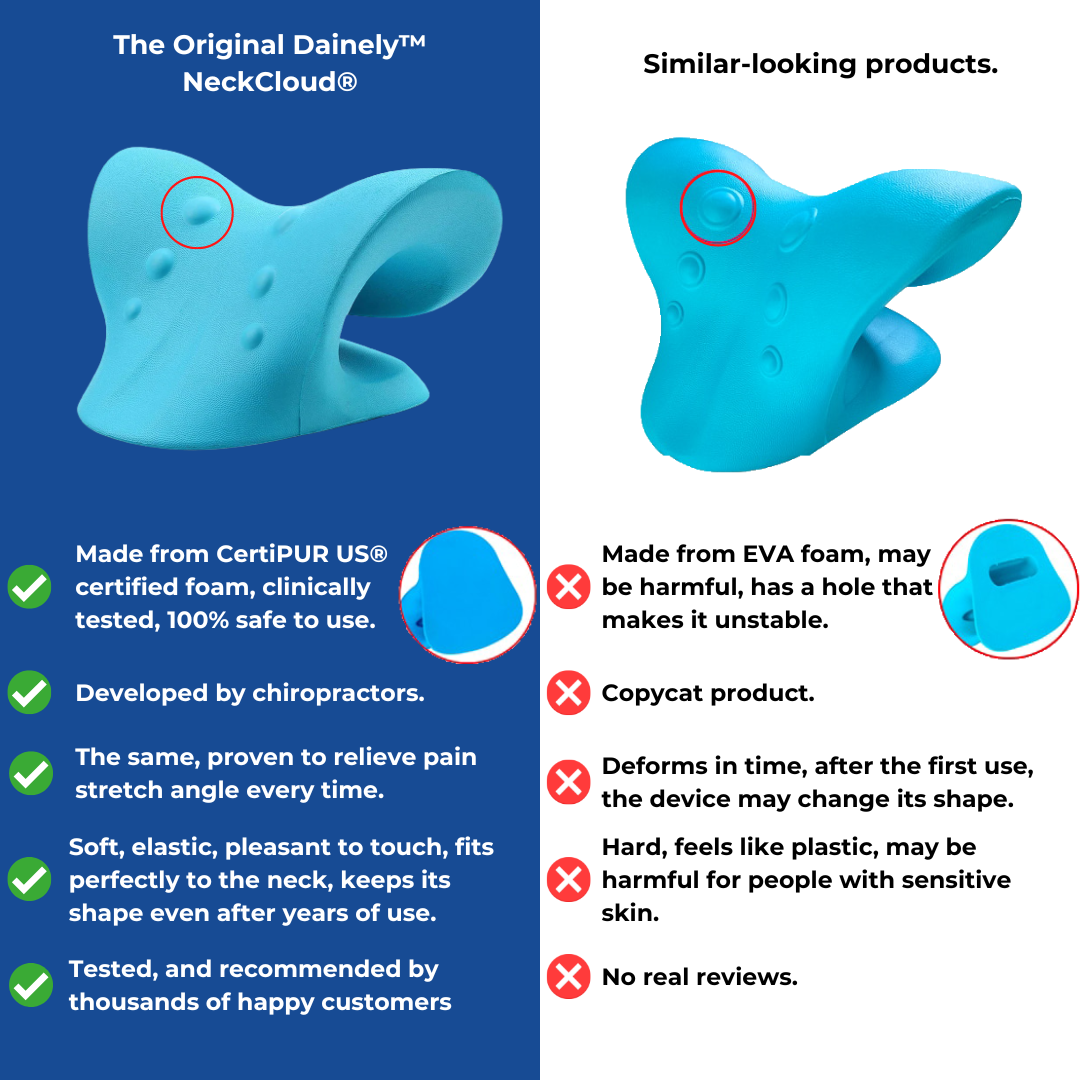Neck Cloud for Cervical Assistance: Loosen Up and Alleviate Neck Pain
Neck Cloud for Cervical Assistance: Loosen Up and Alleviate Neck Pain
Blog Article
Neck Discomfort in the Workplace: Recognizing Threat Elements and Executing Ergonomic Solutions
Neck pain in the office is a common issue that can affect employee health and efficiency. By understanding the various risk factors adding to neck discomfort and applying ergonomic options, organizations can create an extra conducive job setting. Determining these factors is essential in developing targeted methods to minimize pain and stop future injuries. Dealing with ergonomic worries not only improves worker wellness but likewise advertises general job contentment and performance.
Typical Reasons For Neck Discomfort
Neck discomfort in the workplace is a prevalent concern that can be associated to a number of typical causes. In addition, repetitive activities such as constant flexing, turning, or reaching can also add to neck pain over time.

Ergonomic Danger Aspects
Poor comfort designs in the workplace can dramatically add to neck discomfort amongst staff members. Factors such as improper workdesk elevation, inadequate chair support, and uncomfortable positioning of computer system displays can all contribute in the growth of neck pain. When employees are required to rest for extensive durations ready that strain their neck muscular tissues, it can cause tightness, discomfort, and much more severe bone and joint problems gradually.
Additionally, bad ergonomic practices can result in staff members taking on awkward postures while working, such as craning their necks to see a computer system display or getting to uncomfortably for a computer mouse or key-board. neck cloud. These recurring movements and unnatural placements can put excessive anxiety on the neck and surrounding muscles, bring about discomfort and reduced efficiency

Desk Configuration Recommendations
To decrease the threat of neck discomfort and discomfort, there are a number of workdesk configuration suggestions that employees need to take into consideration. Guarantee that the computer system display is placed at eye level to protect against stressing the neck by looking up or down.
It is also important to have ample lights to minimize eye stress, as scrunching up your eyes or leaning ahead can result in neck stress. Organize the workdesk format to maintain frequently made use of items within arm's reach, restricting the requirement for repetitive turning or getting to movements. By implementing these workdesk setup referrals, employees can develop a much more ergonomic office that supports neck health and wellness and reduces the threat of developing job-related neck pain.
Stretching and Exercise Tips
To maintain flexibility and minimize muscle tension in the additional reading office, including stretching and exercise regimens can be useful for total well-being and efficiency. Simple desk-friendly stretches can aid relieve neck pain and avoid rigidity. Neck rolls, shoulder shrugs, and mild side-to-side neck stretches work in soothing tension. Furthermore, including exercises like chin tucks, shoulder blade squeezes, and upper back stretches can assist reinforce muscular tissues that support great stance.
Establishing suggestions or utilizing apps that prompt activity can aid develop a routine stretching regimen. By focusing on these activities, you can improve your physical well-being, lower the threat of neck pain, and enhance your total efficiency in the work environment.
Value of Regular Breaks
In a busy job atmosphere where needs can add to physical strains like neck discomfort, establishing a routine that emphasizes the importance of normal breaks is vital (neck cloud). Taking normal breaks throughout the workday is important for avoiding and minimizing neck pain. Prolonged durations of resting or repeated jobs that site can cause muscular tissue stress and rigidity in the neck and shoulders. By including short breaks into the job routine, workers can reduce the danger of creating neck pain and boost overall comfort and performance.
These breaks can likewise serve as a chance for staff members to practice relaxation techniques or mild neck stretches, additionally promoting musculoskeletal wellness. Applying a society that values and prioritizes regular breaks can have a substantial influence on minimizing neck pain and enhancing general wellness in the workplace.
Verdict
In verdict, attending to ergonomic danger elements and implementing appropriate workstation arrangements are necessary in reducing neck pain in the workplace. By advertising good posture, giving appropriate assistance, and encouraging routine breaks and stretches, companies can create a healthier and extra productive job environment for staff members. Prioritizing employee wellness via ergonomic services is key to protecting against discomfort and boosting general office contentment.
Neck pain in the work environment is a widespread issue that can influence staff member wellness and productivity. By recognizing and dealing with these typical causes of neck pain in the office, companies can take proactive steps to produce an extra comfortable and ergonomic job setting for their employees.
Poor functional designs in the workplace can substantially add to neck discomfort among employees. By carrying out these workdesk arrangement recommendations, employees can produce an extra ergonomic workspace that supports neck health and minimizes the danger of creating job-related neck discomfort.
Neck rolls, shoulder shrugs, and mild side-to-side neck stretches are effective in easing stress.
Report this page